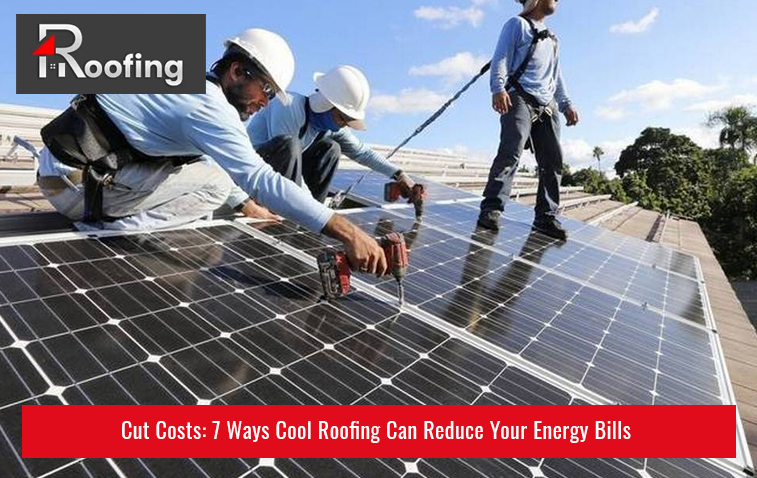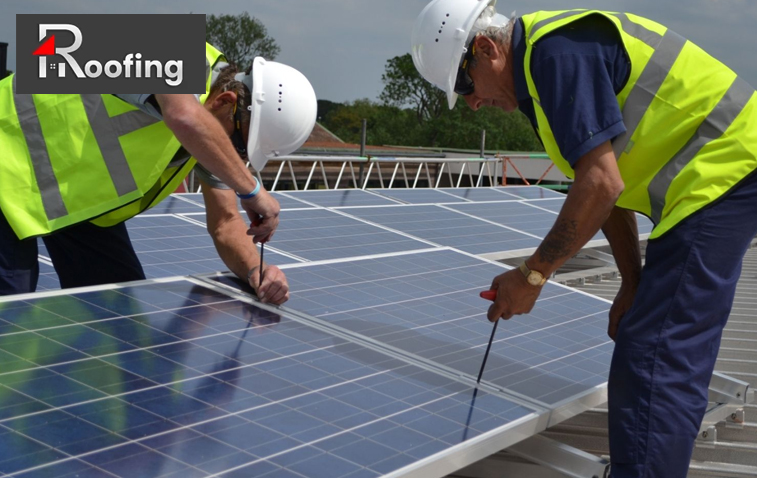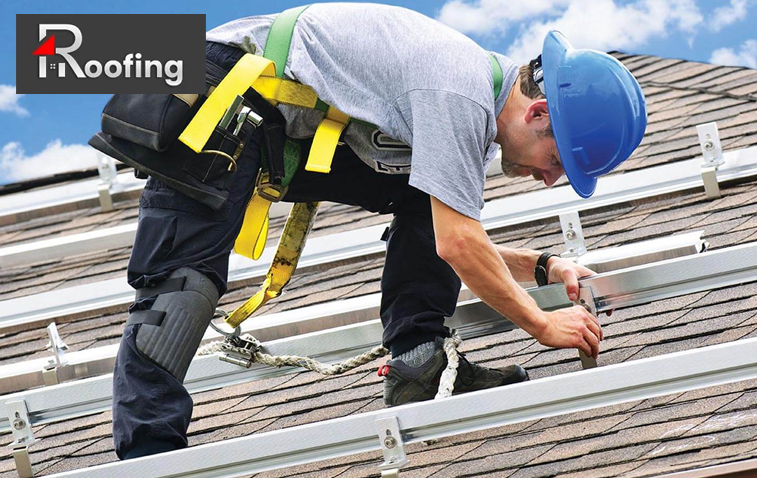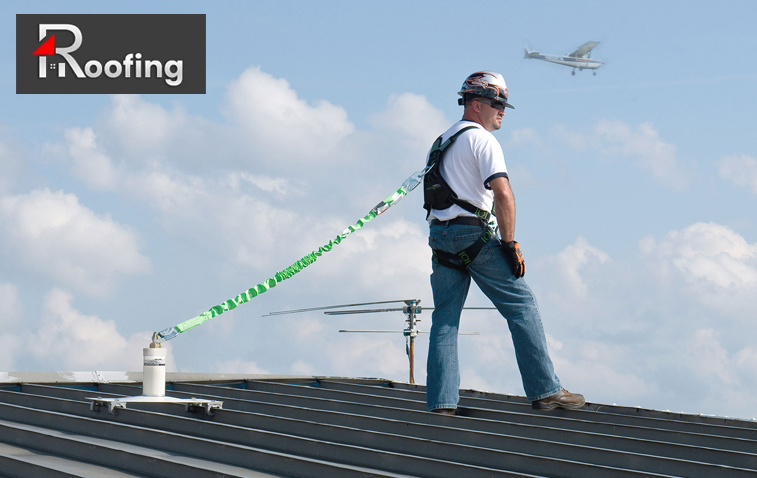As homeowners and businesses alike grapple with rising energy costs, innovative solutions are becoming increasingly important. One such solution that’s gaining traction is cool roofing technology. Cool roofs are designed to reflect more sunlight and absorb less heat than standard roofs, offering a range of benefits that extend far beyond mere aesthetics. Let’s explore seven ways that cool roofing can help reduce your energy bills while also contributing to a more sustainable future.

At the heart of cool roofing technology is its ability to reflect solar radiation. This fundamental property is the key to unlocking significant energy savings.
Cool roofs are engineered with materials that have high solar reflectance (ability to reflect sunlight) and high thermal emittance (ability to radiate absorbed heat). These properties work in tandem to keep the roof surface cooler than traditional roofing materials.
When sunlight hits a cool roof, a large portion of that energy is reflected back into the atmosphere instead of being absorbed into the building. This reflection process significantly reduces the amount of heat transferred into the structure below.
Several materials and coatings can achieve the cool roof effect:
Each of these options offers varying degrees of reflectivity and can be tailored to suit different architectural styles and climates.
Studies have shown that cool roofs can reduce roof surface temperatures by up to 50°F (28°C) during peak summer heat. This dramatic reduction in surface temperature translates directly into lower indoor temperatures and reduced cooling needs.
One of the most immediate and noticeable effects of cool roofing is its impact on air conditioning requirements.
By reflecting more sunlight and absorbing less heat, cool roofs significantly reduce the thermal load on a building. This reduction means that air conditioning systems don’t have to work as hard to maintain comfortable indoor temperatures.
When HVAC systems operate under less stress, they not only consume less energy but also tend to have longer operational lifespans. This reduced wear and tear can lead to fewer repairs and replacements, offering additional long-term savings.
Cool roofs allow for the possibility of installing smaller, more efficient air conditioning units. As the cooling load decreases, buildings can often downsize their HVAC equipment without sacrificing comfort.
Beyond energy savings, the reduced heat transfer results in more consistent indoor temperatures. This stability can lead to improved comfort for occupants, potentially increasing productivity in work environments and enhancing quality of life in residential settings.
Cool roofing technology extends its benefits beyond individual buildings, playing a crucial role in addressing urban climate challenges.
Urban areas tend to be significantly warmer than surrounding rural areas due to the concentration of heat-absorbing surfaces like asphalt and traditional roofing materials. This phenomenon, known as the urban heat island effect, can lead to increased energy consumption and air pollution.
Widespread adoption of cool roofing can help mitigate the urban heat island effect by reducing the overall temperature of urban areas. This collective cooling effect can lead to:
Recognizing these broader benefits, many cities and governments are implementing policies and incentives to encourage the adoption of cool roofing technologies. These initiatives can provide additional financial motivation for property owners to make the switch.
For those considering or already utilizing solar energy, cool roofing can offer an unexpected boost to system performance.
Solar panels, like most electronic devices, operate more efficiently at lower temperatures. As temperatures rise, solar panel efficiency can decrease, reducing overall energy production.
By keeping roof surfaces cooler, cool roofing technology creates a more favorable environment for solar panels. This temperature reduction can lead to:
The combination of cool roofing and solar panels opens up possibilities for integrated roof designs that maximize both reflectivity and energy generation. Some cool roofing materials can even be designed to complement the aesthetic of solar installations.
Even if solar panels aren’t in your immediate plans, installing a cool roof now can make future solar installations more effective and easier to implement.
Cool roofing technology doesn’t just benefit individual property owners; it can also play a crucial role in managing broader energy infrastructure challenges.

During hot summer months, energy grids often struggle to meet peak demand, typically occurring in the late afternoon when air conditioning use is at its highest. This strain can lead to brownouts, blackouts, and increased energy costs for consumers.
By reducing the cooling load on buildings during the hottest parts of the day, cool roofs help flatten the peak energy demand curve. This flattening effect can:
Many utility companies recognize the value of cool roofing in managing peak demand. Some offer incentives or rebates for cool roof installations as part of their demand-side management strategies.
In addition to individual savings, the widespread adoption of cool roofing can contribute to overall community resilience, making areas less susceptible to energy-related disruptions during extreme heat events.
While the energy-saving benefits of cool roofs are significant, their impact on roof longevity offers another avenue for long-term cost reduction.
Traditional roofing materials expand and contract with temperature fluctuations, leading to wear and tear over time. Cool roofs, by maintaining lower and more consistent temperatures, experience less thermal stress.
Many cool roofing materials are designed with enhanced UV resistance, protecting the roof structure from sun damage and degradation.
Some cool roofing systems offer improved moisture management properties, reducing the risk of water damage and extending the life of the roof structure.
When evaluating the overall cost-effectiveness of cool roofing, it’s important to consider not just immediate energy savings but also the potential for reduced maintenance and replacement costs over the life of the roof.
Longer-lasting roofs mean less frequent replacements, reducing the environmental impact associated with roofing material production and disposal.

While energy savings are a primary focus, cool roofing can also contribute to improved indoor air quality, offering both health and potential energy-related benefits.
By keeping roof surfaces cooler and managing moisture more effectively, cool roofs can help reduce the conditions that lead to mold and mildew growth in attics and upper floors.
Some traditional roofing materials can emit volatile organic compounds (VOCs) when heated. Cool roofs, by maintaining lower temperatures, can help reduce these emissions.
With reduced heat transfer from the roof, ventilation systems can operate more efficiently, potentially leading to better air circulation and improved indoor air quality.
Improved indoor air quality can lead to health benefits for occupants, potentially reducing sick days and increasing productivity in work environments.
With less heat entering through the roof, HVAC systems may be able to focus more on air filtration rather than just temperature control, further enhancing indoor air quality.
As we face the dual challenges of rising energy costs and climate change, cool roofing technology offers a promising solution that addresses both issues simultaneously. By reflecting solar radiation, reducing cooling loads, mitigating urban heat islands, enhancing solar panel efficiency, easing peak energy demand, extending roof lifespans, and improving indoor air quality, cool roofs provide a multifaceted approach to energy savings and sustainability.
The benefits of cool roofing extend far beyond individual property owners, contributing to more resilient communities and a more sustainable future. As technology continues to advance and awareness grows, cool roofing is poised to play an increasingly important role in our built environment.
Whether you’re building a new structure or considering a roof replacement, exploring cool roofing options can lead to significant long-term savings and environmental benefits. By embracing this innovative technology, we can work towards a future where our buildings not only shelter us but also actively contribute to a more sustainable and energy-efficient world.
Yes, cool roofing can still be beneficial in colder climates. While the energy savings may be less pronounced, cool roofs can help prevent snow and ice buildup, reduce thermal shock to the roof structure, and still provide cooling benefits during warmer months.
Cool roofing can potentially reduce the need for artificial lighting. The increased reflectivity of cool roofs can lead to more natural light entering through skylights and windows, potentially reducing lighting energy consumption and improving indoor environments.
In some cases, the high reflectivity of cool roofs can cause glare issues for neighboring buildings. Additionally, in very cold climates, the reduced heat absorption might slightly increase heating costs in winter. However, these issues can often be mitigated through careful design and material selection.
Cool roofing and green roofs can be complementary technologies. While green roofs provide natural cooling through evapotranspiration, they can be combined with cool roofing materials on non-vegetated areas to maximize overall roof performance. Some green roof designs inherently have cool roof properties.

12 Roofing
12 Roofing brings together seasoned roofers and contractors to provide premier roofing solutions. Explore our comprehensive services and experience the exceptional quality and professionalism we offer.
Tile roofing is a classic choice for Burbank homeowners seeking […]
Have you ever imagined a roof that doesn’t just protect […]
Rain gutters plus are required in ensuring that water does […]
Speak with our in-house experts in residential roofing services for new ideas!
Copyright © 12 Roofing - 2025. All Rights Reserved.
